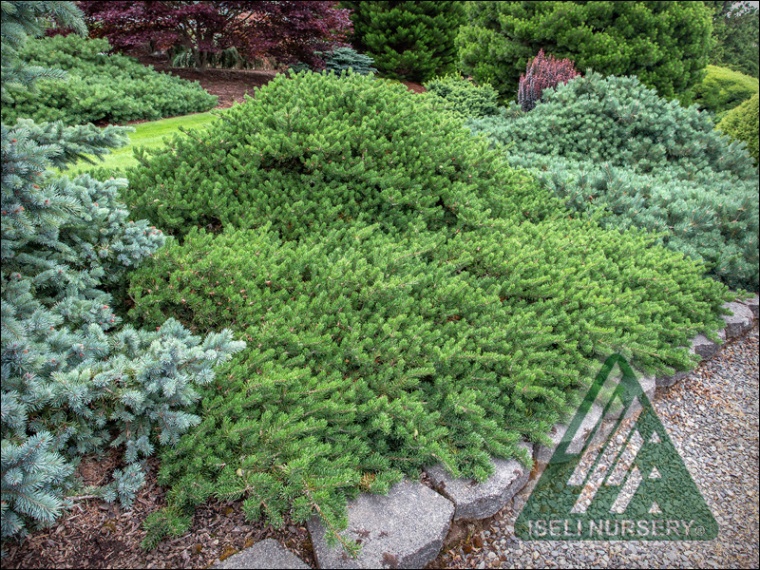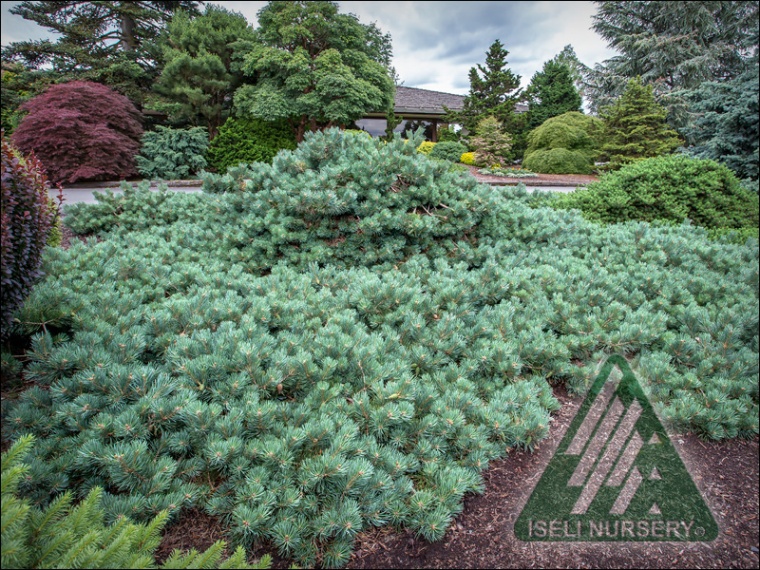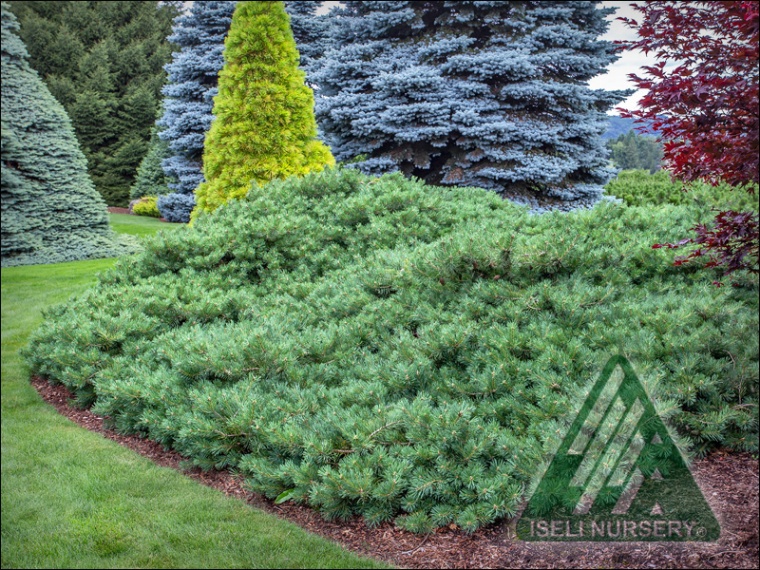We have survived the “creepy creepers” and were thankful for all of our many blessings and now winter is nigh upon us as we march into the holidays and prepare to begin a new year. This time of year is always fun (and at times, stressful). I am excited to collect some colorful foliage for my annual wreath and swag construction. Some of my favorite conifers are very well suited to provide colorful and delightfully scented foliage for these projects. If you are interested in growing lovely foliage for your own holiday decorating, then do read on.
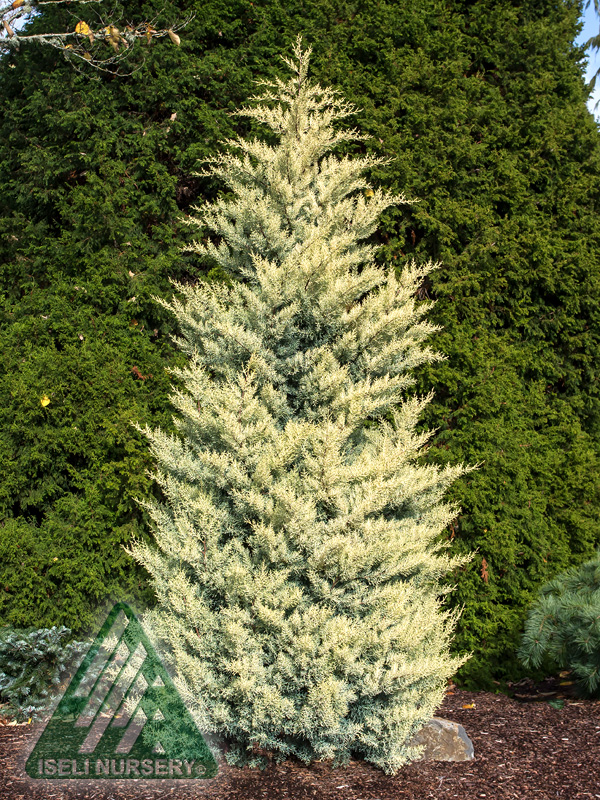
Nothing beats the rich dark green color and pleasant Christmassy scent of Douglas Fir (Pseudotsuga menziesii) for not only a Christmas tree, but also greens for decorating. I usually utilize our native Douglas Fir foliage as the base for my wreaths and swags. When I want something with similar foliar texture but with a little added zing, I’ll look to Pseudotsuga menziesii ‘Blue’ and P. m. ‘Waggin Tails’.

P.m. ‘Waggin Tails’ has the same lovely scent as its parent, but its branchlets have a bit of a curve or twist which will add an interesting texture to holiday constructions. As its name implies, ‘Blue’ has bright blue foliage which complements the other colors in my wreaths. Both are tremendous additions to the garden when space allows.
Both Cupressus arizonica ‘Aurea’ and Cupressus arizonica ‘Blue Pyramid’ are amazing garden trees with brightly contrasting colors. The soft, and yet, intense yellow of ‘Aurea’ will add a brilliant focal point in your garden and a delightful color contrast to the greens and blues of other great conifers. ‘Blue Pyramid’ is a bright, light blue color, that again can make a remarkable garden focal point and a colorful contrast to darker greens in the typical holiday wreath. If your garden is large enough, I recommend both of these plants for year-round color in both your garden and your winter decorating.
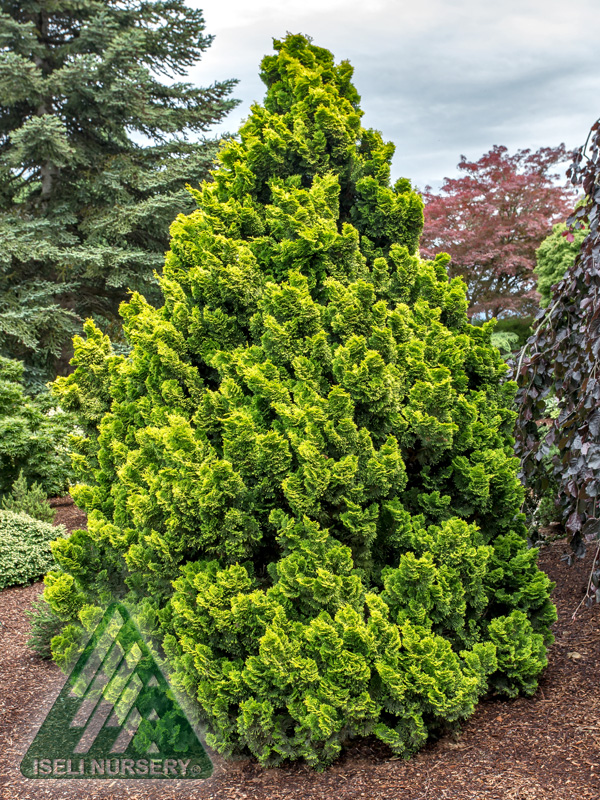
Several cultivars of Chamaecyparis obtusa are regulars on my wreath-making list. Two bright choices to add eye-catching color are Chamaecyparis obtusa ‘Nana Lutea’ and C.o. ‘Sunny Swirl’. ‘Nana Lutea’ is always a winner in my wreaths with its bright yellow, soft-textured foliage. It delights the eyes as it contrasts with the blues and green of other foliage choices. For a more subtle yellow color, but with the addition of a unique textural twist, I love to include C.o. ‘Sunny Swirl’ for its coarse, twisted and fasciated foliage.
Sometimes I will include Threadbranch Cypress as a filler for its wonderful contrast in foliar texture. Its coarse, wispy threads of foliage add a pleasing effect and, depending on cultivar choice, may also add contrasting color, as with the bright yellow of Chamaecyparis pisifera ‘Golden Mop’ or C.p. ‘Boulevard’ for soft-textured, bluish foliage.

I usually try to have the added, wintry scent of Pine in my holiday decorations, so I will include the bluish-green foliage of Pinus strobus (Eastern White Pine) or Pinus parviflora (Japanese White Pine) cultivars, both of which have 5-needle bundles so they add a definite softness to the design. From the longer needles of Pinus strobus ‘Macopin’ or ‘Pendula’ to the shorter needles of ‘Sea Urchin’ or ‘Mini Twists’, there is definitely an Eastern White Pine for the holidays. The Japanese White Pine offers generally shorter needle length, but a similar color and overall effect. P. parviflora ‘Bergman’ is an excellent choice for foliage density and a variegated form, such as, ‘Goldilocks’ or ‘Ogon Janome’ add softness and a splash of color.
Alright, it seems I have put together my list, now I need to get to work! I hope you will have some time to enjoy the relaxing art of holiday wreath-making or decorating in whatever style you desire.
Ed-
Conifer Lover

